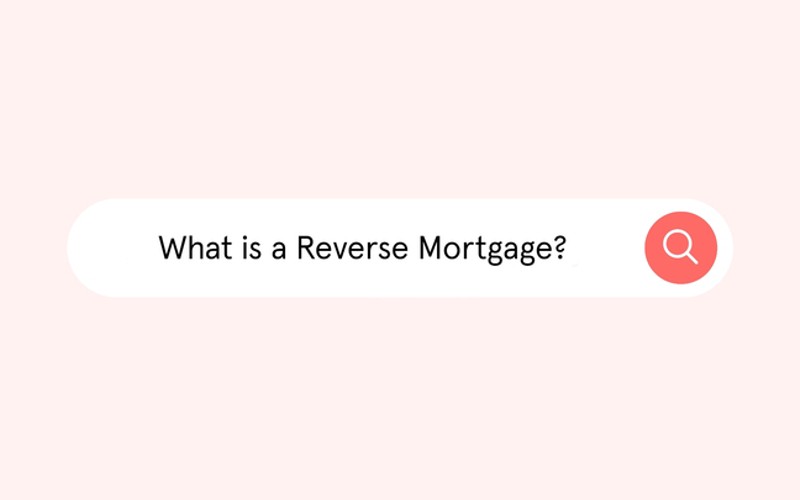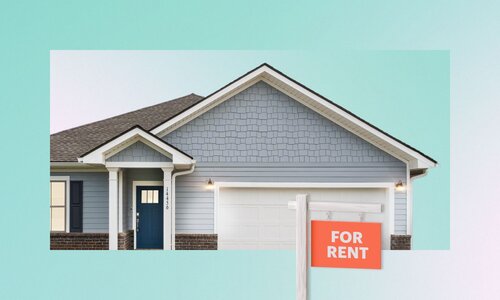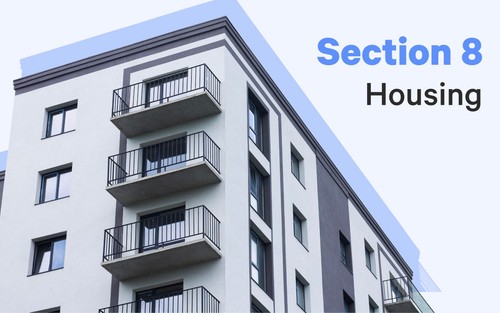If you’ve watched any daytime television, you’ve likely seen commercials for a reverse mortgage. You may be wondering about this type of mortgage, its benefits, and if you qualify for one. Our FAQ guide breaks down what you need to know about reverse mortgages.
What is a reverse mortgage?
A reverse mortgage loan functions similarly to a traditional mortgage in that homeowners borrow money against their home equity. They are called “reverse” mortgages because instead of the borrower making payments to the lender, the lender provides tax-free money to the borrower. The loan proceeds can be used to pay for home repairs, healthcare bills, or other expenses.
The lender makes payments to the borrower based on the property value and the available home equity. The borrower does not make any monthly mortgage payments and is not required to repay the loan as long as they live in the home and continue to meet their other loan obligations, such as paying property taxes and insurance.
Loan repayment is due once the borrower dies, permanently moves out of the home, or sells the home. The borrower (or their heirs) can do this by selling the house or refinancing.
What are the benefits of a reverse mortgage?
Reverse mortgages can be an attractive option for seniors on a fixed income who are “house rich but cash poor,” meaning they own their home outright or have a low remaining mortgage balance but lack sufficient liquid assets to cover all their expenses.
You can stay in place as you age, pay off an existing loan, and secure your retirement. Choosing this option can help stave off foreclosure, supplement Social Security, and avoid other expensive loans, such as lines of credit. As a non-recourse loan, it protects your other assets from lender repayment.
What makes a reverse mortgage different from a traditional mortgage?
There are some critical differences between a reverse mortgage and a traditional mortgage. For starters, the homeowners are more likely to already live in the home. They may make payments on an existing mortgage or own the home outright. Traditional mortgages are usually used to finance the purchase of a house that the borrower doesn’t live in or own yet.
The most notable difference with a reverse mortgage loan is that the borrowers don’t make monthly payments. Instead, the loan is due in full when the borrower leaves home (e.g., through a sale or moving to an assisted living facility). Traditional mortgages require the borrower to make monthly payments to the lender.
Additionally, interest and fees accumulate each month on the outstanding balance of the reverse mortgage. As your loan balance grows, the value of your home equity falls. Unlike traditional mortgages, borrowers typically pay down both interest and the principal amount borrowed over time.
If you take out a reverse mortgage loan, you still must pay property taxes and homeowners insurance, use the property as your principal residence, and keep your house in good condition.
Who qualifies for a reverse mortgage?
Eligibility requirements include:
- Be 62 years of age or older.
- Own your home outright or have a low mortgage balance that can be paid off at closing with proceeds from the reverse mortgage loan
- Occupy your home as your primary residence
While single-family homes are common, Home Equity Conversion Mortgage program requirements allow for other property types.
How to get a reverse mortgage
Getting a reverse mortgage loan is similar to getting a traditional one but may have additional steps depending on your lender and loan type. Most reverse mortgages require you to meet with a reverse mortgage counselor—either in person or over the phone—to discuss your reverse mortgage options.
Next, you’ll work with a reverse mortgage loan originator who will collect financial information and help you complete the reverse mortgage application.
The lender will order a property appraisal to determine the value of your home. The loan cannot exceed the appraised value. They may also require a home inspection to ensure that your home meets specific standards.
After your loan is approved, you’ll close on the reverse mortgage and receive the funds. The amount you receive depends on several factors, including the appraised value, the amount of equity you have, and your age. You can select various terms, like a line of credit or an upfront lump sum.
Are there different types of reverse mortgages?
Home Equity Conversion Mortgages (HECMs) are the most common type of reverse loan because the Federal Housing Administration (FHA) insures them. HECM loans are for homeowners aged 62 years and older who own their home outright or have a low mortgage balance. If you have a loan remaining, you can pay it off with the loan proceeds. Both variable-interest and fixed-rate HECMs are available.
The other qualifications for a HECM include the following:
- Not owing any federal debt, like federal income taxes or student debt (although you can use the HECM to pay this off)
- The home must be in good shape, as indicated by a home inspection
- You must be counseled by a U.S. Department of Housing and Urban Development (HUD) approved reverse mortgage counseling agency
The amount you’ll qualify for under a HECM loan depends on the current interest rate, the available home equity, and the age of the youngest borrower or eligible non-borrowing spouse. There is a federal government-determined maximum, which was $970,800 in 2022.
Other reverse mortgage options exist, but they’re rare because they are not FHA-insured. For example, a Single-Purpose Reverse Mortgage is sponsored by state and local governments, as well as non-profit organizations, to help low-income homeowners pay for home repairs or property taxes. These loans can only be used for specified purposes, so they cannot be used to supplement income or pay down medical bills. Single-purpose reverse mortgages are only available in some areas.
A Proprietary Reverse Mortgage is a non-HECM loan offered by private companies and can have higher interest rates than a HECM. That lender stipulates their requirements.
Another reverse mortgage option is the Piggyback Reverse Mortgage, which lets you take out a second mortgage simultaneously with your reverse mortgage. This could be a good option if you don’t have enough home equity to qualify for a reverse mortgage on its own.
What costs are associated with a reverse mortgage?
Several fees come with taking out a reverse mortgage loan. These include an origination fee, mortgage insurance premium (MIP), and closing costs.
The origination fee is a percentage of the reverse mortgage loan amount and is charged by the lender to cover the costs of processing the loan. The MIP is insurance that protects the lender in the event of loan default.
Any borrower applying for a HECM reverse mortgage is required to complete approved HUD counseling. The counseling costs vary based on your ability to pay for the counseling.
Other fees are third-party costs associated with real estate closing. These include an appraisal, home inspection, title insurance, recording taxes, credit checks, and other fees.
A mortgage insurance premium (MIP) is a charge in addition to your homeowner’s insurance. The Federal Housing Administration charges an initial and annual MIP. This insurance protects the lender if you don’t receive your expected loan advances.
Once the loan closes, you’ll have some ongoing costs added to the loan balance every month you carry the reverse mortgage. These include:
- Loan interest
- Lender servicing fees
- Annual mortgage insurance premium of 0.5% of the outstanding balance
- Property charges like homeowners insurance, flood insurance, and property taxes
What are some misconceptions about reverse mortgages?
Misinformation about reverse mortgages has created confusion about what they can do for seniors. Some people think a reverse mortgage is like receiving “free money.” While you can use it for various purposes, such as paying living expenses or medical bills, it’s not free money. The loan balance will continue to rise each month, and the loan will become due at some point. The homeowners or their heirs will need to repay the loan. Usually, but not always, this involves selling the home.
Another misconception is that reverse mortgages are only for people who have financial difficulties and are about to lose their homes to foreclosure. This may have been true in the past, but it’s no longer the case. Today, many people utilize reverse mortgages, including those seeking a means to supplement their income or remain in their homes as they age.
Lending scams targeting seniors have also spread misconceptions about reverse mortgages.
What should you consider before getting a reverse mortgage?
As with any loan, there are pros and cons to taking out a reverse mortgage. Some things to consider include the following:
- How long you plan on staying in your home: If you think there’s a chance you may sell your home or move in the next few years, a reverse mortgage may not be the best option, as you may not have enough time to build up equity.
- What your financial goals are: A reverse mortgage can provide you with a steady income stream, but it will also reduce the value of your estate. If you’re hoping to leave your home to your heirs, a reverse mortgage may not suit you.
- How much debt you have: A reverse mortgage will add to the debt you owe, so if you’re already struggling with debt, it may not be the best solution.
- Your credit score and history: You don’t need perfect credit to qualify for a reverse mortgage, but if you have a history of defaulting on loans, it may be challenging to get approved.
- Your home’s value: If your home is worth less than you owe on your mortgage or you have a high remaining balance, you may not be able to get a reverse mortgage.
- The fees: Closing costs are part of reverse mortgages, so you’ll need to factor that into your decision.
How do you end a reverse mortgage?
Most reverse mortgage lenders give borrowers three days after the loan’s closing to cancel the deal for any reason without penalty. Exercising your right of recession requires you to notify the lender in writing. It’s best to send by certified mail and keep all copies of the cancellation notice.
Once the lender has been notified, the borrower has 20 days to return the funds to the lender.
For canceling after the three-day right of recession window, it’s best to seek legal counsel.
Otherwise, ending a reverse mortgage requires paying the loan amount in full.
I don’t qualify for a reverse mortgage. How else can I unlock equity in my home?
Let’s say you don’t meet the age requirements or lack enough equity in your home to qualify for the reverse mortgage. There are a few alternatives to reducing your housing expenditures and gaining access to your equity.
- Downsize to a more affordable home. This can reduce overall expenses, as smaller properties will have less expensive property taxes, utilities, and maintenance costs.
- Refinance if current interest rates are more favorable. This could lower your monthly payment.
- Apply for a home equity loan or home equity line of credit (HELOC). The downside is that you’ll have to make monthly payments. Qualifying for a HELOC also requires you to meet specific income and debt ratio requirements.
Can a reverse mortgage work for you?
A reverse mortgage can be a way to buffer expenses in your retirement years. You can receive the money from a reverse mortgage in several ways: all at once, monthly, through a line of credit, or some combination thereof. If you’re considering a reverse mortgage, it’s essential to research and talk to a financial advisor to see if it’s the right option for you. Be aware that there are reverse mortgage scams; therefore, speak to a qualified, HUD-approved advisor.
Easily invest in real estate with Arrived
With Arrived Homes, you can find options for downsizing or invest in real estate that will provide you with equity or an income stream in retirement. See our available properties to explore options.







